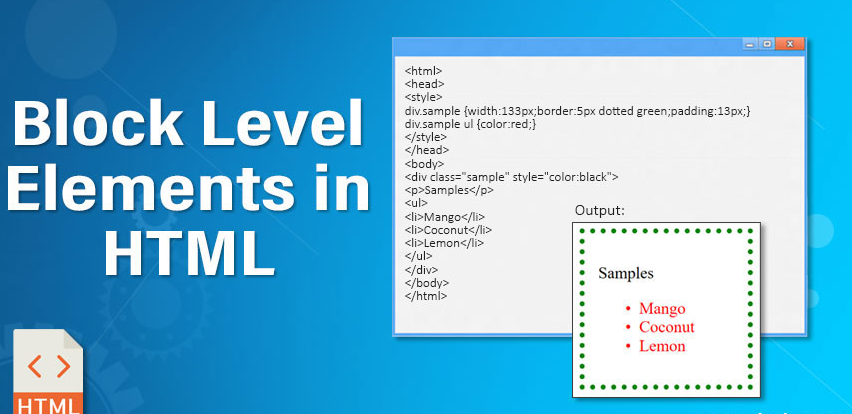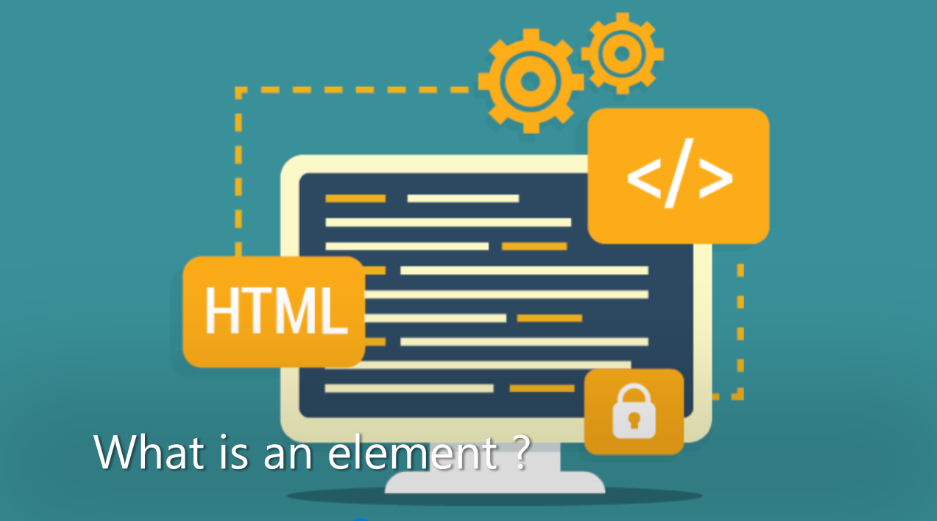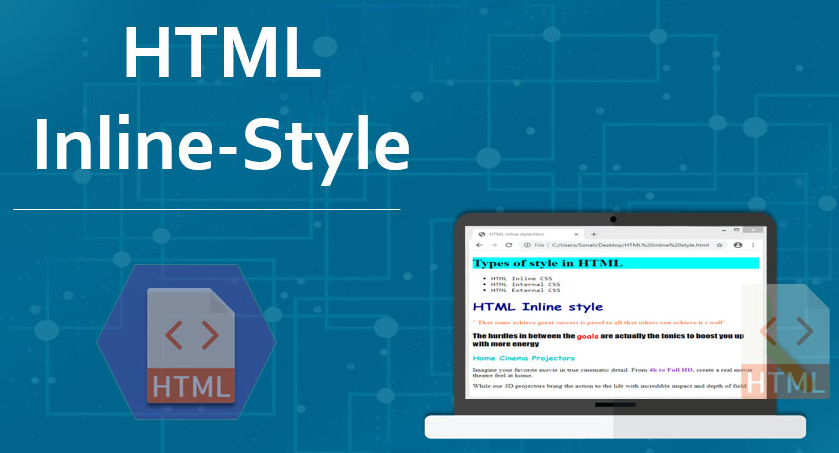One of the elements of good page design, whether for print or for the web, is the concept of direction, which corresponds closely to speed. Elements of page design intentionally direct the viewer’s eyes from one area of the page to another.
Computer programming is built on five basic elements, including input, output, loops and conditionals, mathematical, and variables and data structures. Explore the concepts of computer programming, discover the five main elements of programming, and find out how each element contributes to a computer program.
An element may refer to any of the following :
- When referencing Hypertext Markup Language, see our HTML element definition for more information.
- Elements is often used as an abbreviation for Adobe Photoshop Elements.
- An element is part of a larger group. For example, in computer programming an array can contain different elements (indexes) that can be stored and called individually.
Types of HTML Elements –
Elements can be placed in two different groups.
- Block level
- Inline level elements
1. Block level – It forms the structure of the document.

- These are the elements, which structure main part of web page, by dividing a page into coherent blocks.
- A block-level element always start with new line and takes the full width of web page, from left to right.
- These elements can contain block-level as well as inline elements.
Following are the block-level elements in HTML.
The most commonly used block-level elements are <address> <article> <aside> <blockquote> <canvas> <dd> <div> <dl> <dt> <fieldset> <figcaption> <figure> <footer> <form> <h1> <h6> <header> <hr> <li> <main> <nav> <noscript> <ol> <output> <p> <pre> <section> <table> <tfoot> <ul> and <video>.
2. Inline level elements – while this one makes up the content of a block.
- Inline elements are those elements, which differentiate the part of a given text and provide it a particular function.
- These elements does not start with new line and take width as per requirement.
- The Inline elements are mostly used with other elements.
Following are the Inline-level elements in HTML.
Whereas, the commonly used inline-level elements are <a> , <abbr> , <acronym> , <b> , <bdo> , <big> , <br> , <button> , <cite> , <code> , <dfn> , <em> , <i> , <img> , <input> , <kbd> , <label> , <map> , <object> , <q> , <samp> , <script> , <select> , <small> , <span> , <strong> , <sub> , <sup> , <textarea> , <time> , <tt> , <var>.


